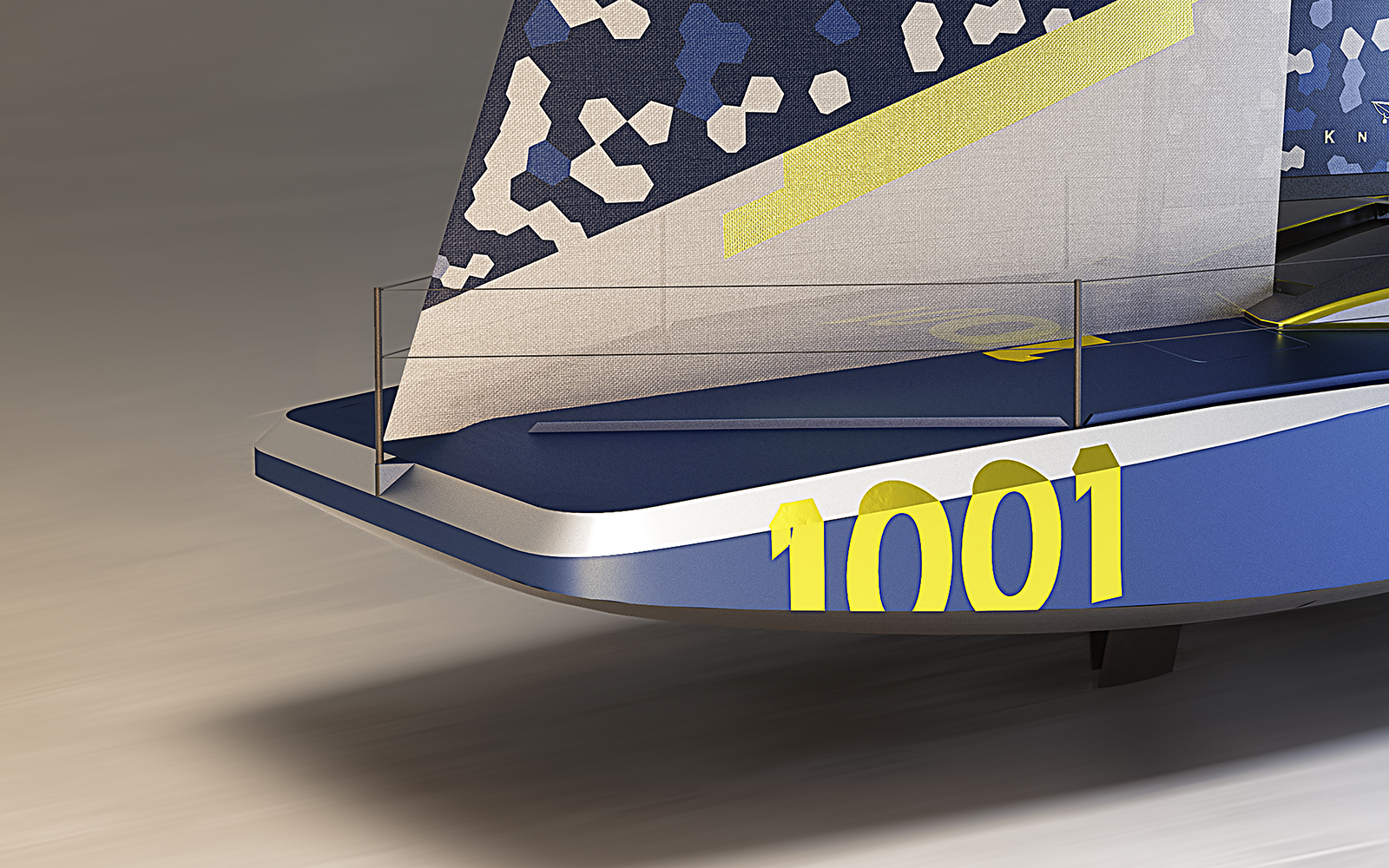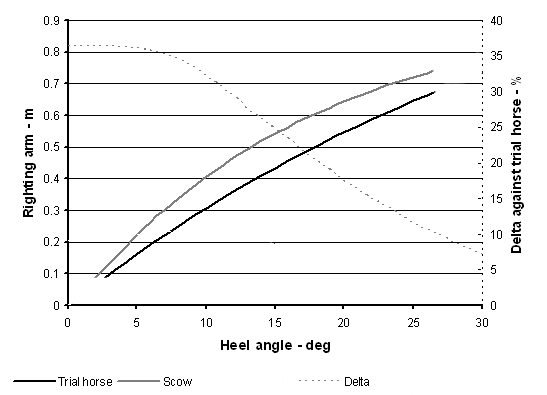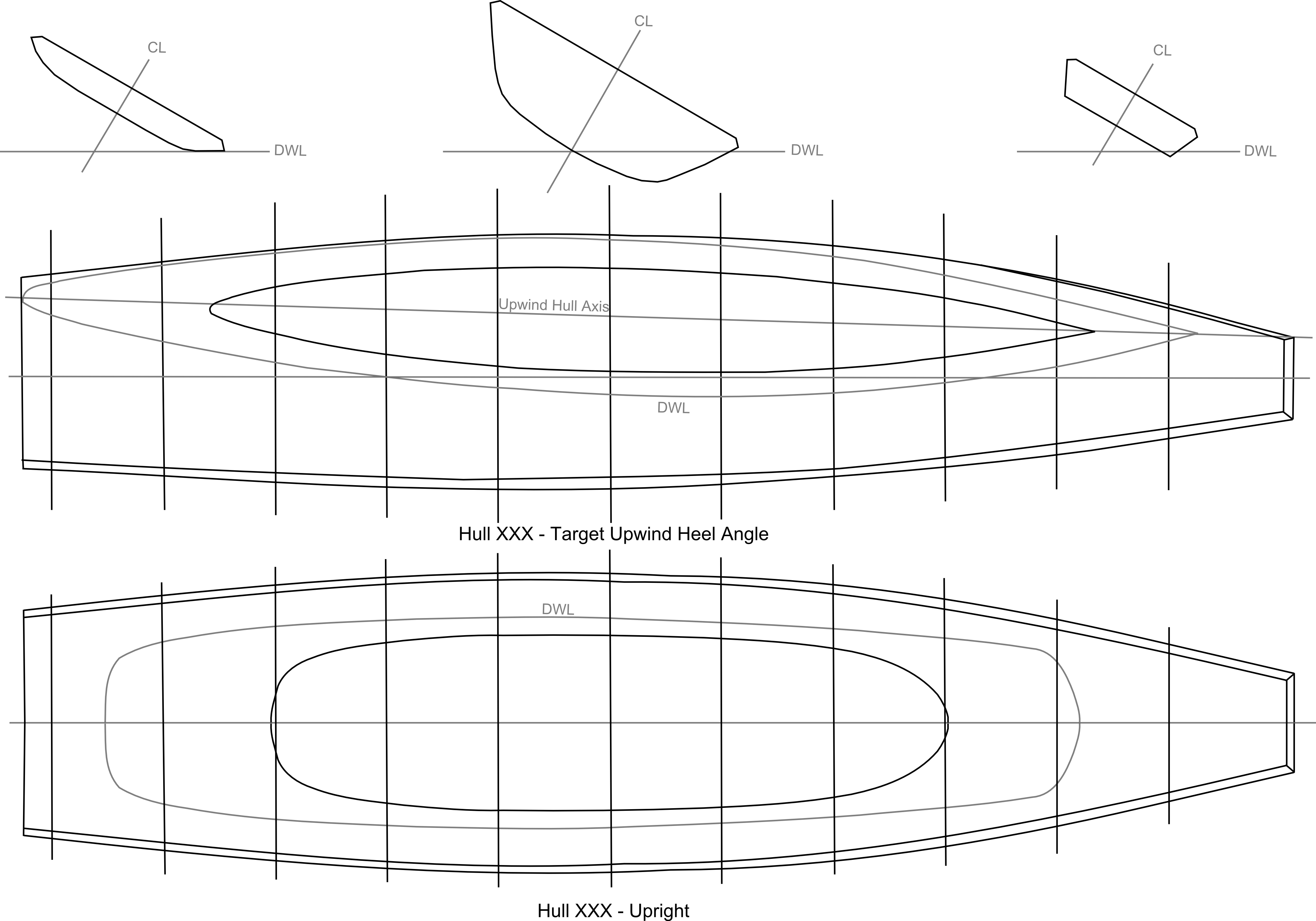
FIRST PART OF A 3 PART SERIES LOOKING AT SCOW HULL SHAPES.
SHORTER VERSION OF THE ARTICLE ‘NEW DESIGN PARADIGM’ PUBLISHED IN 2011 IN SEAHORSE MAGAZINE.
THERE IS SOMETHING ABOUT SCOW HULL SHAPES THAT MAKES THEM INCREDIBLY INTERESTING FOR A NAVAL ARCHITECT.
IT IS NOT JUST ABOUT CRACKING A NEW CODE, WHICH OF COURSE HAS A CERTAIN CHARM. SCOW HULLS OFFER STRONG, GAME CHANGING PROPERTIES, IDEALLY SUITED FOR RACING. OF COURSE THEY ARE NOT NEW, AND TO THE UNTRAINED EYE THEY MAY LOOK SIMILAR. BUT THE USE OF SCIENCE, AND COMPUTER METHODS TODAY HELP US DEVELOP THEM FURTHER, AND TAYLOR THEM TO SPECIFIC CONDITIONS.
PART ONE – THE PROS
Racing yacht design is regularly presented as a choice between power (in other words righting moment) and efficiency (primarily associated with drag). While correct, a more complete picture of a boat’s performance is can be better explained by : hydrodynamic efficiency and righting moment on one side and aerodynamic efficiency and heeling moment on the other side.
In the game of give and take that yacht design often appears, scow hulls arrive with a number of fascinating characteristics: high form stability, the possibility to carefully taylor specific hull shape properties for both heeled and upright conditions, a reduction of windage and a lesser tendency to trim by the bow. Which all combined for speed.
MORE FORM STABILITY FOR MORE DRIVING FORCE
Form stability is the key obvious advantage. Weight and centre of gravity aside, form stability at small angles can be approximated by k x LWL x BWL^3 x 1025 / Displacement, where k is a waterplane shape constant. Analysis of standard hull shape will show a shape factor of around 40 against typically 60 for scow hull shapes. While some people may turn their nose up at a 30% gain, for us something this clear is at least worth investigating.
A cubic function is a powerful feature and the added form stability of course comes from the added waterline beam towards the bow, where form stability is lost on a conventional hull shape. Scow hulls are additionally particularly suited to box rules where hull beam is only measured at one point (at the maximum point only).
While more righting moment means more sail area, and therefore more driving force, speed is eventually limited by hull drag, and this is where the second advantage comes in.

DUAL HULL SHAPE FOR LESS DRAG
The fundamentals are well understood: on the one hand, upwind speed is driven by waterline length and requires little volume in the extremities which often results in considerable hull rocker. On the other hand, reaching performance is driven by wetted surface area, demands a fuller hull and flat straight sections to promote lift. The requirements are largely opposite.
When designing a conventional hull shape, finding the optimum between upwind and reaching performance is, therefore, necessary. It is indeed possible to play with heel angle and variable hull properties but they are intrinsically linked. For instance increasing bow volume will have an impact both at low and high heel angles.
The scow hull shape however can provide two distinctive hull shapes depending on whether the boat is heeled or upright. Both ‘virtual’ shapes can then be tailored specifically and respectively to the upwind and reaching conditions to reduce hull drag. It is not straight forward, and it takes special tools and mastery to design such a hull.
The figure below shows an extreme example, with waterline symmetry upwind when heeled, a fine angle of entry created by the forward chine and the increase of waterline length created by the overhangs. At lower heel angles one can see the straighter sections, how relatively far forward and flat the planning surface is and the generous reserve buoyancy provided by the overhang.
The art, so to speak, is then to tailor both modes depending on the yacht’s program, appendages and sail plan.
To sum up, more righting moment means more driving force. Driving force is limited by hull drag which can be smaller for a scow hull. However as speed increases other factors start to kick in, the first of which is bow down.

REDUCED BOW DOWN
With increasing speeds, the drive force up in the rig and the drag underwater increase. The vertical lever between these two forces makes the boat pitch by the bow. And with bow down comes added drag.
On a conventional hull, the transom will start to come in the water with increasing heel angle pushing the bow down further. It is a form of undesirable by product of conventional hull shapes. It has become typical to design the boat in a bow up attitude when floating, and remove hull volume by the transom when heeled (hulls flared aft) to compensate it. Looking at the previous picture though, one can see that on a scow hull, the heeled hull axis remains parrallel to the centreline making for a more predictable, more balanced sailing. It also means that the effect of fore and aft crew placement, or water ballasts are not wasted on compensating the hull shape, but on carrying sails longer.
LOWER WEIGHT
Conventional hull shape require a relatively high freeboard to go through waves via static lift which in the end is rather limited. Scows, however are designed to pass above the waves and generate dynamic lift from the hull bottom. The faster the boat goes, the more reserve lift forward. As lift via hull volume is less required (only for slow speeds), the freeboard can be diminished drastically: anypart of the hull not required for reserve buoyancy can simply be chopped away. This is the background to the scow’s classical reverse sheerline.
Apart from better aerodynamics, a lower freeboard has two further positive effects: a reduction of structural weight, and if the design rule includes an average freeboard requirement, a stiffer hull longitudinally.

Recent Comments